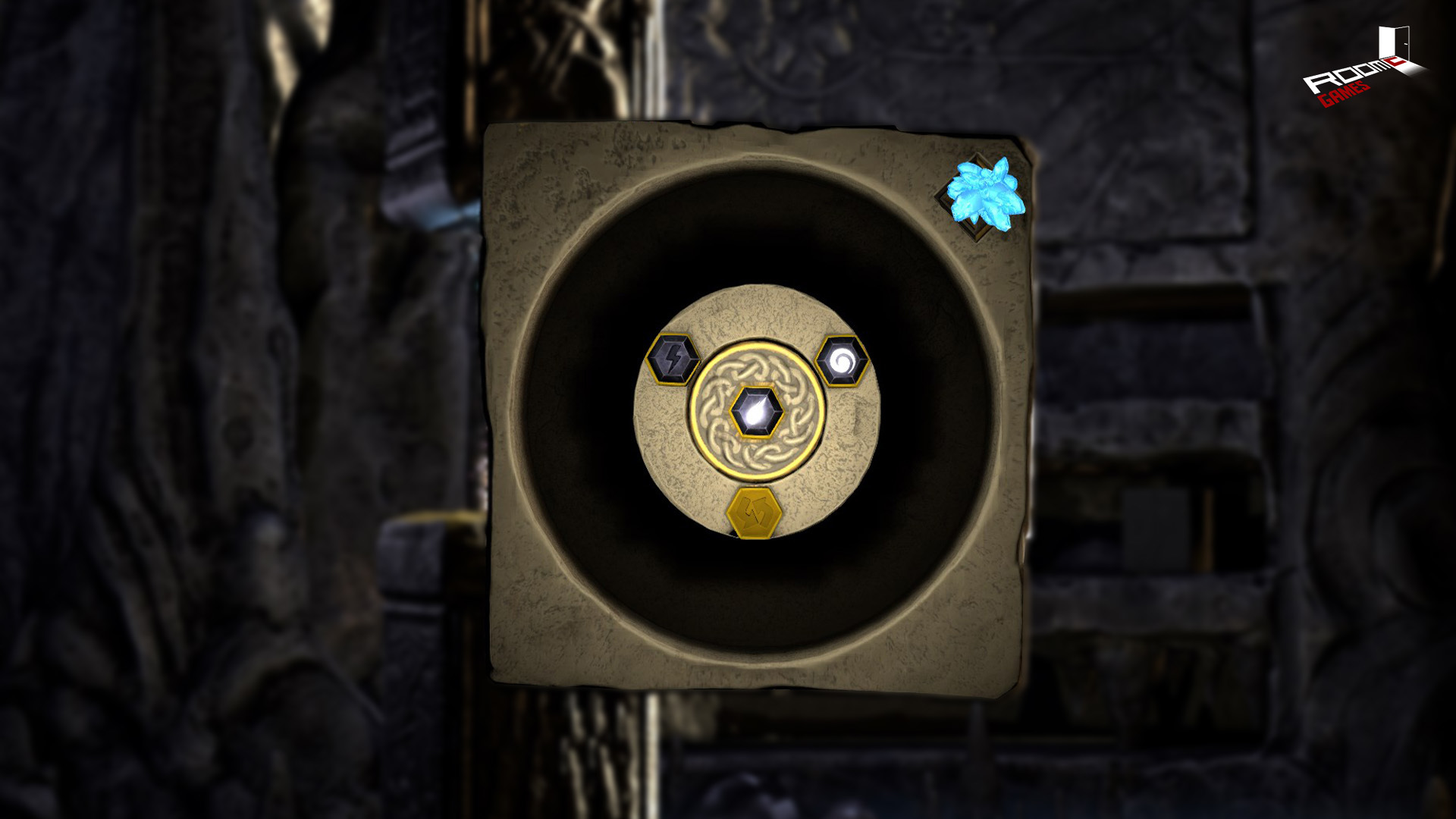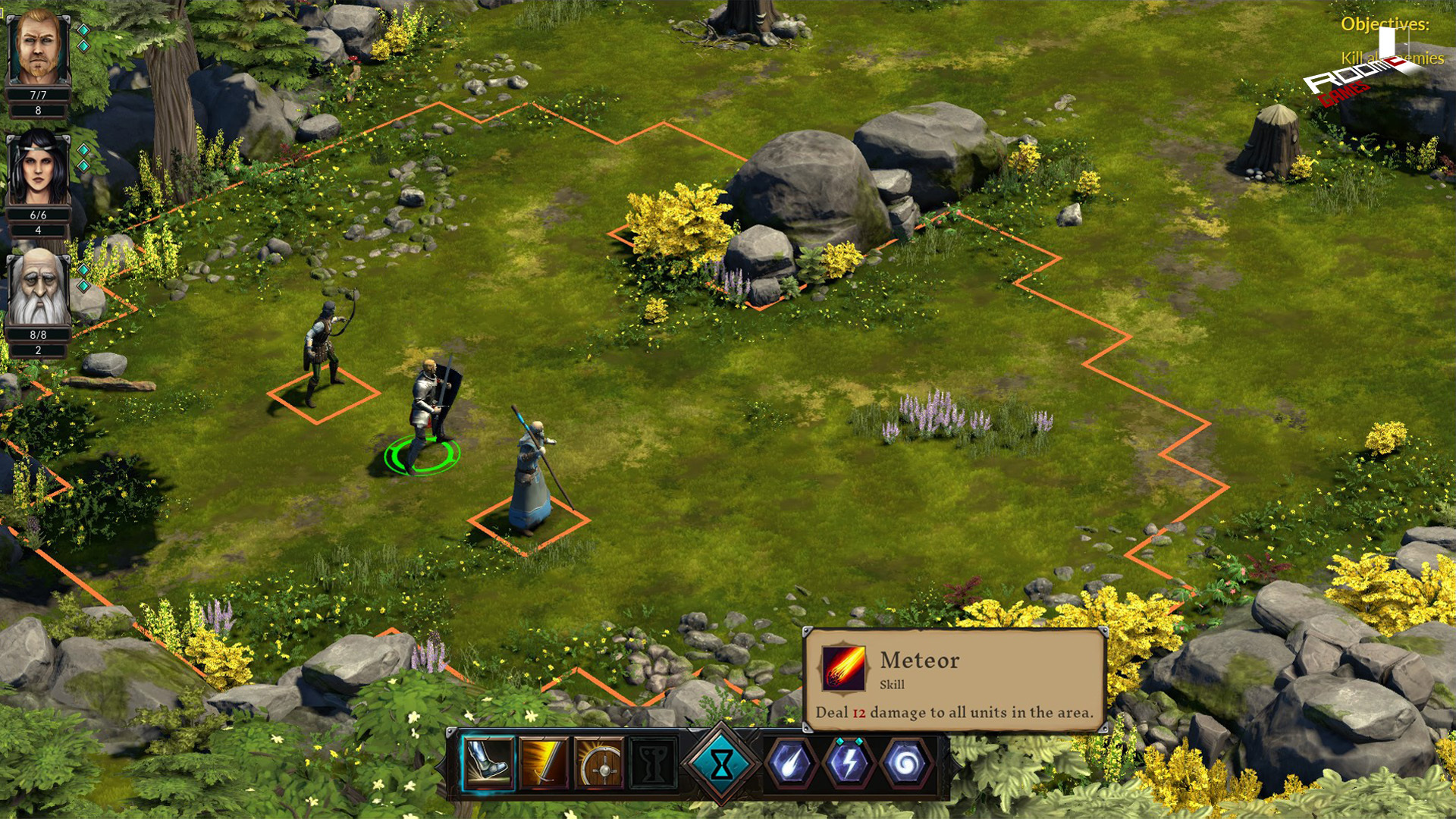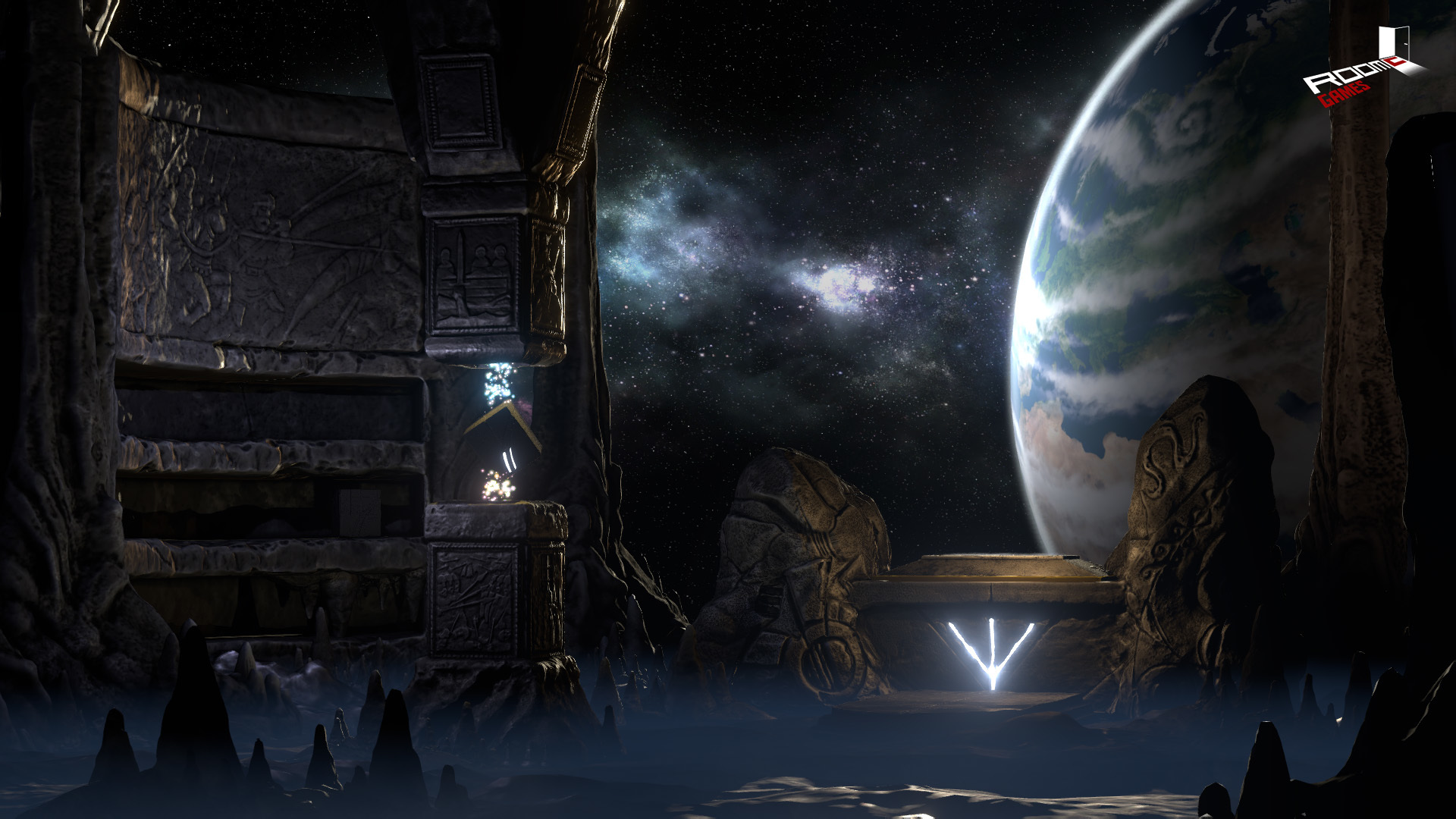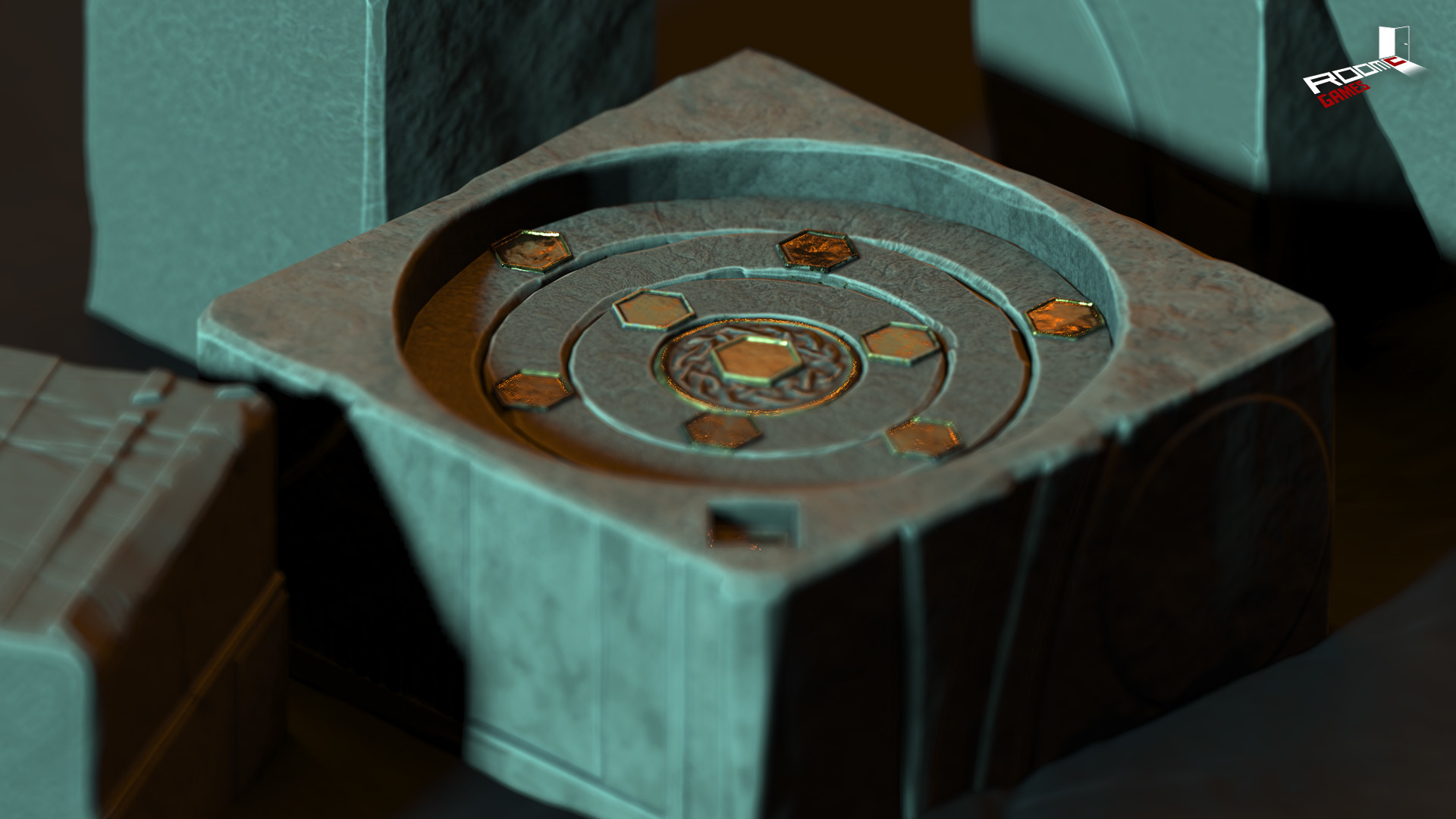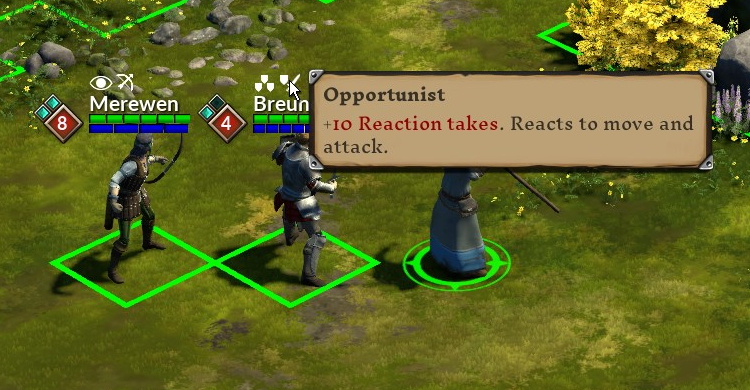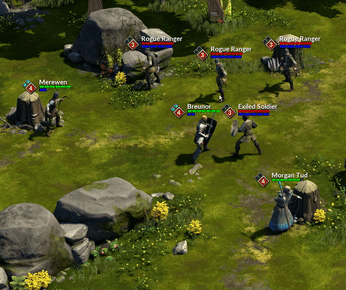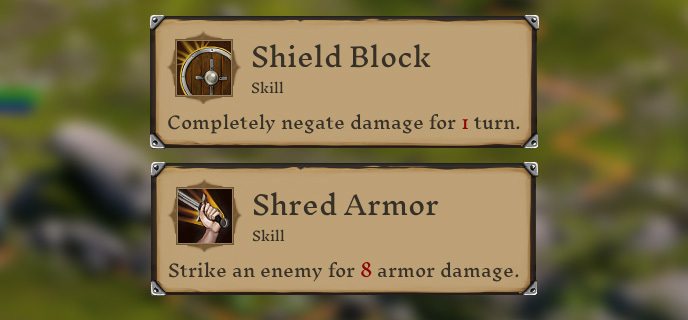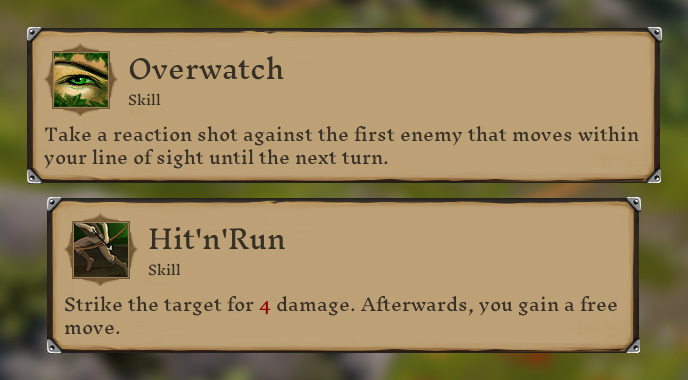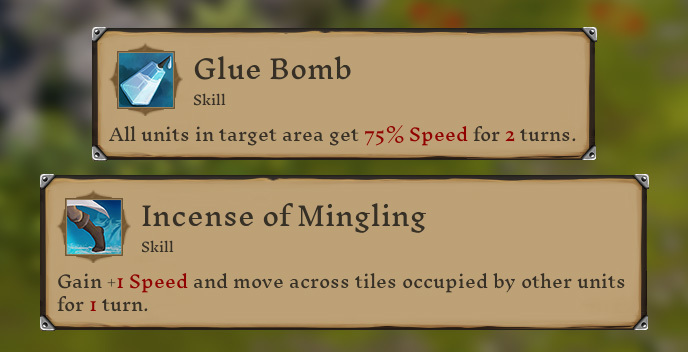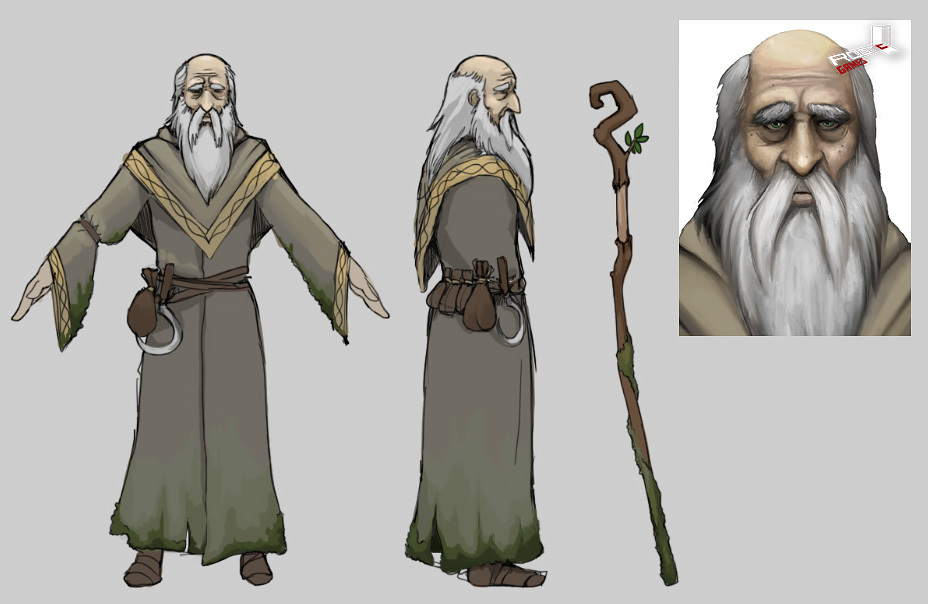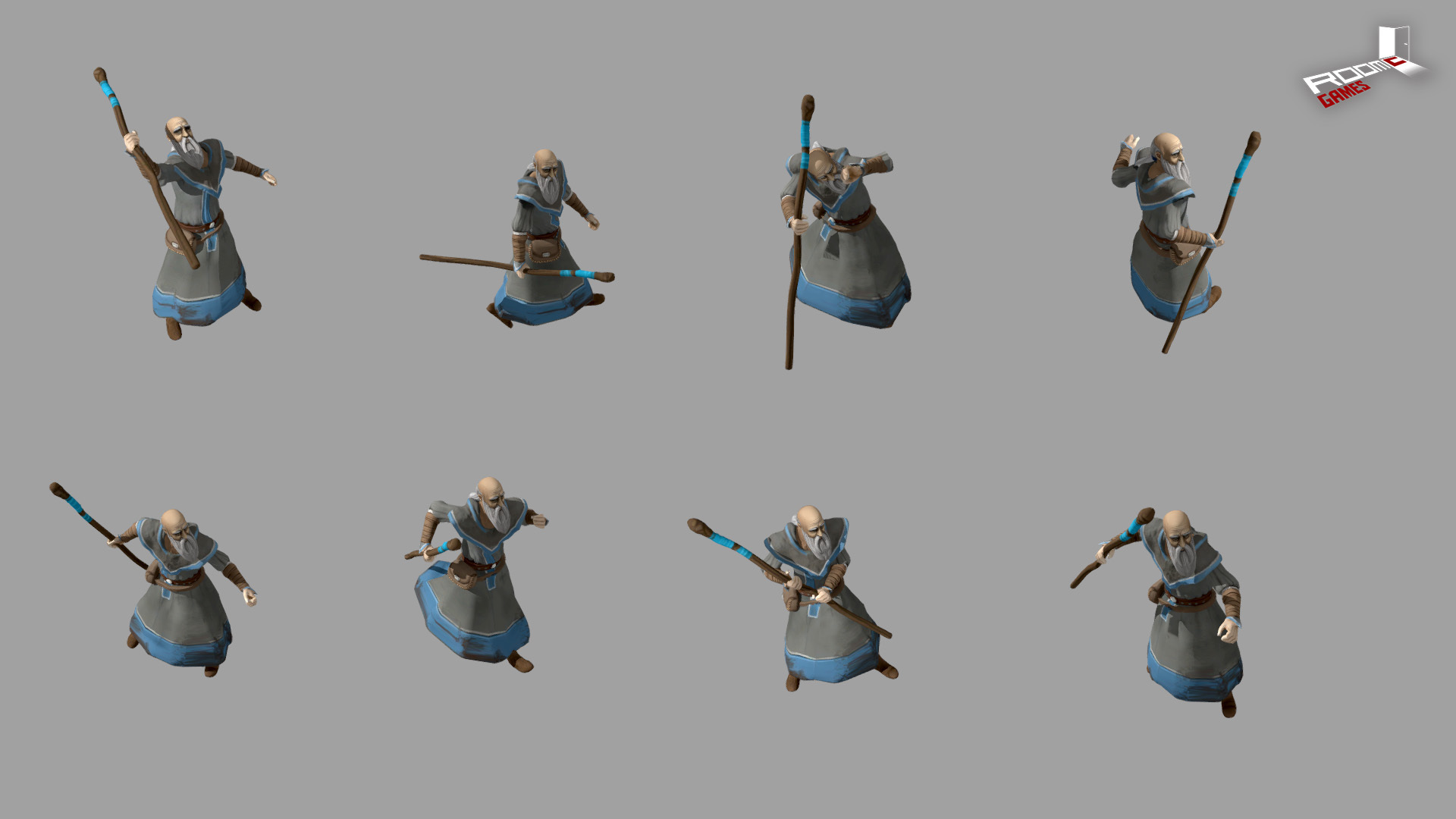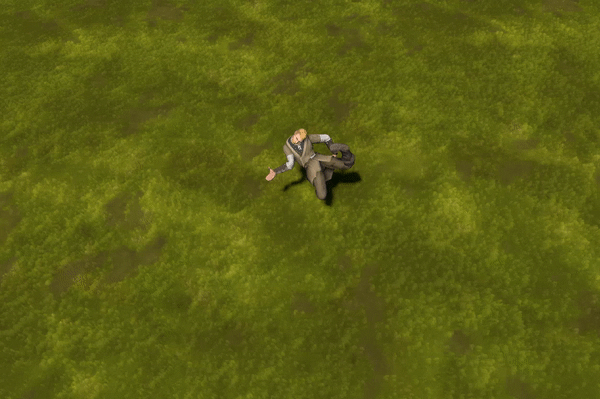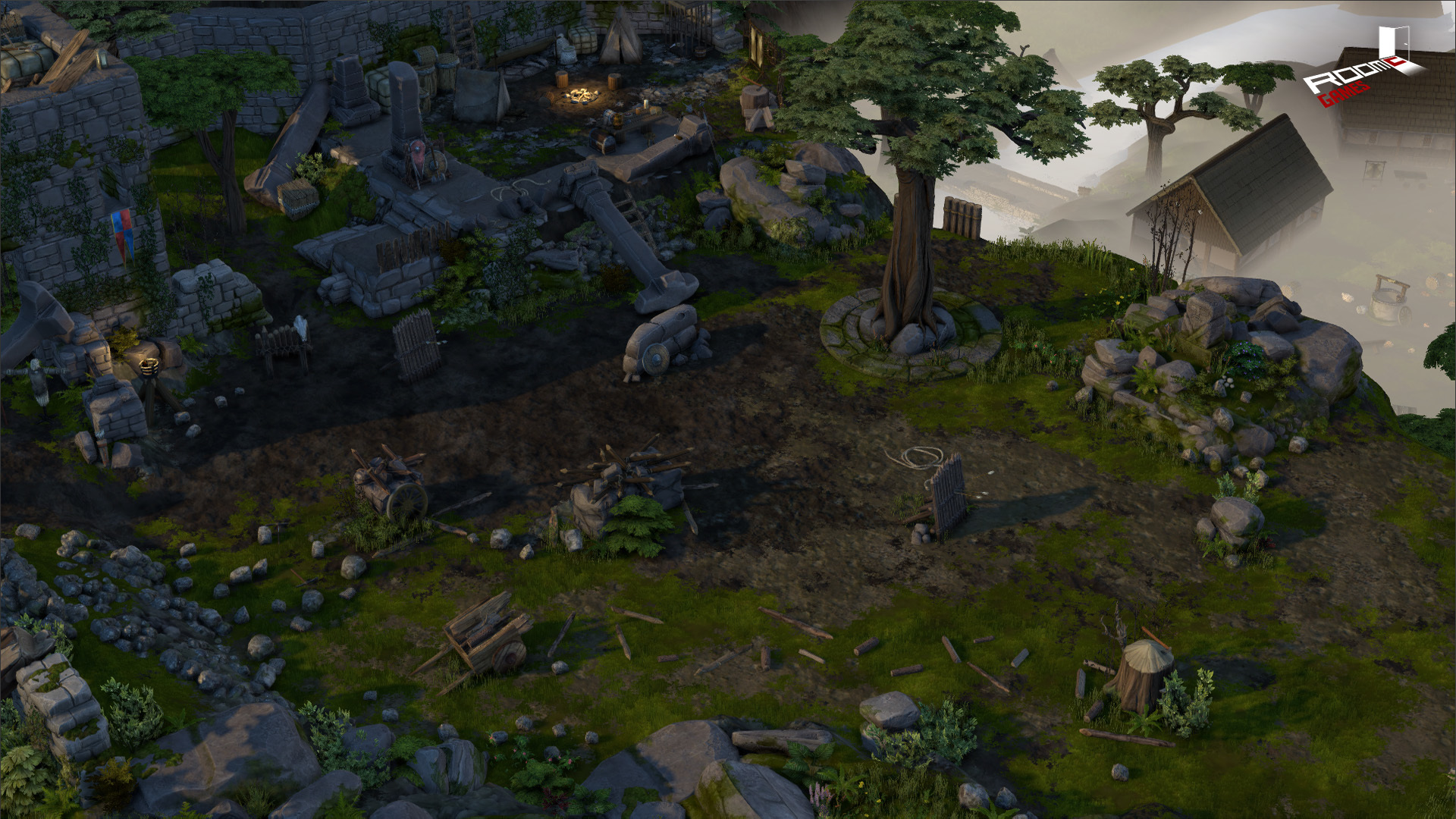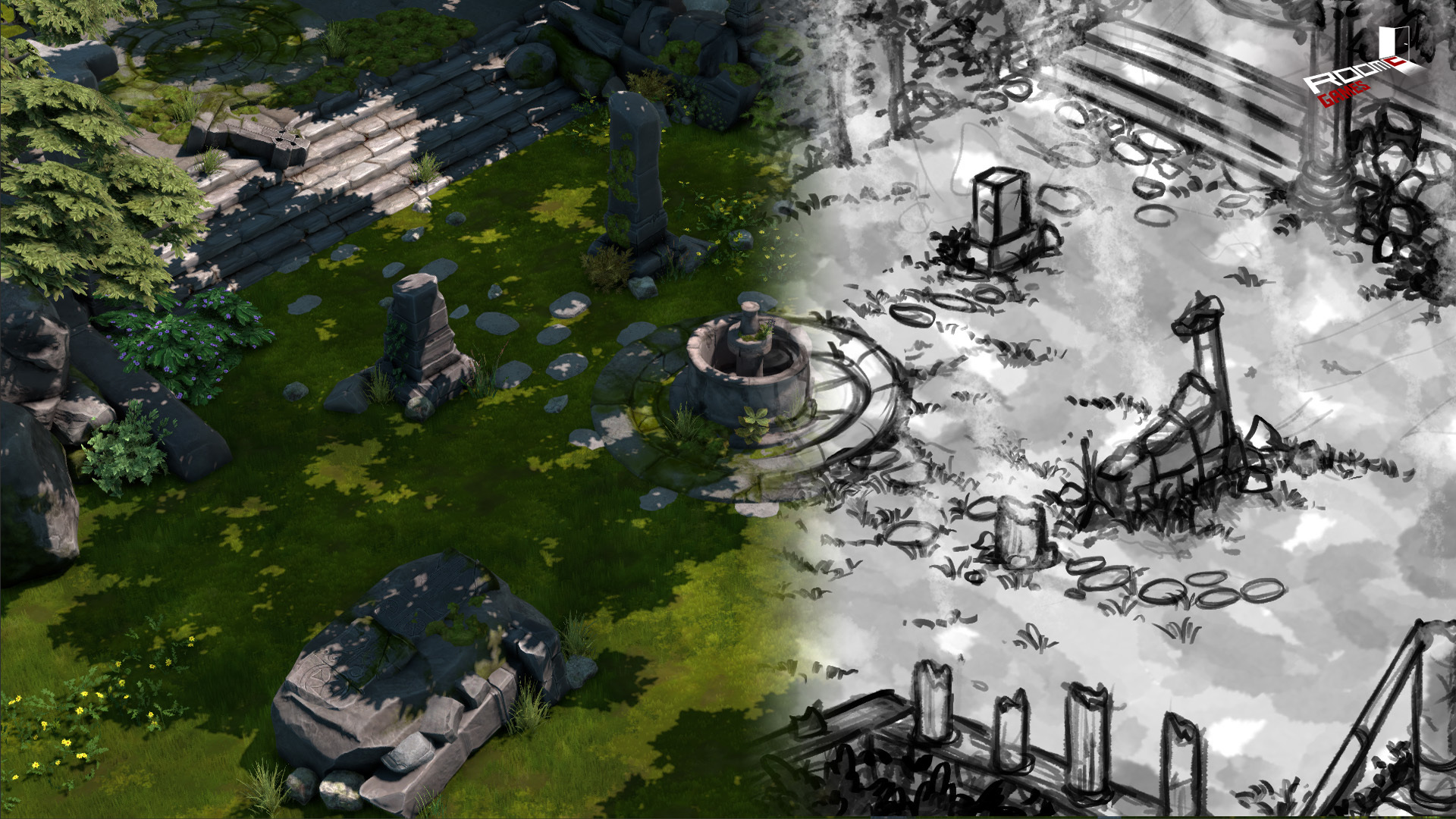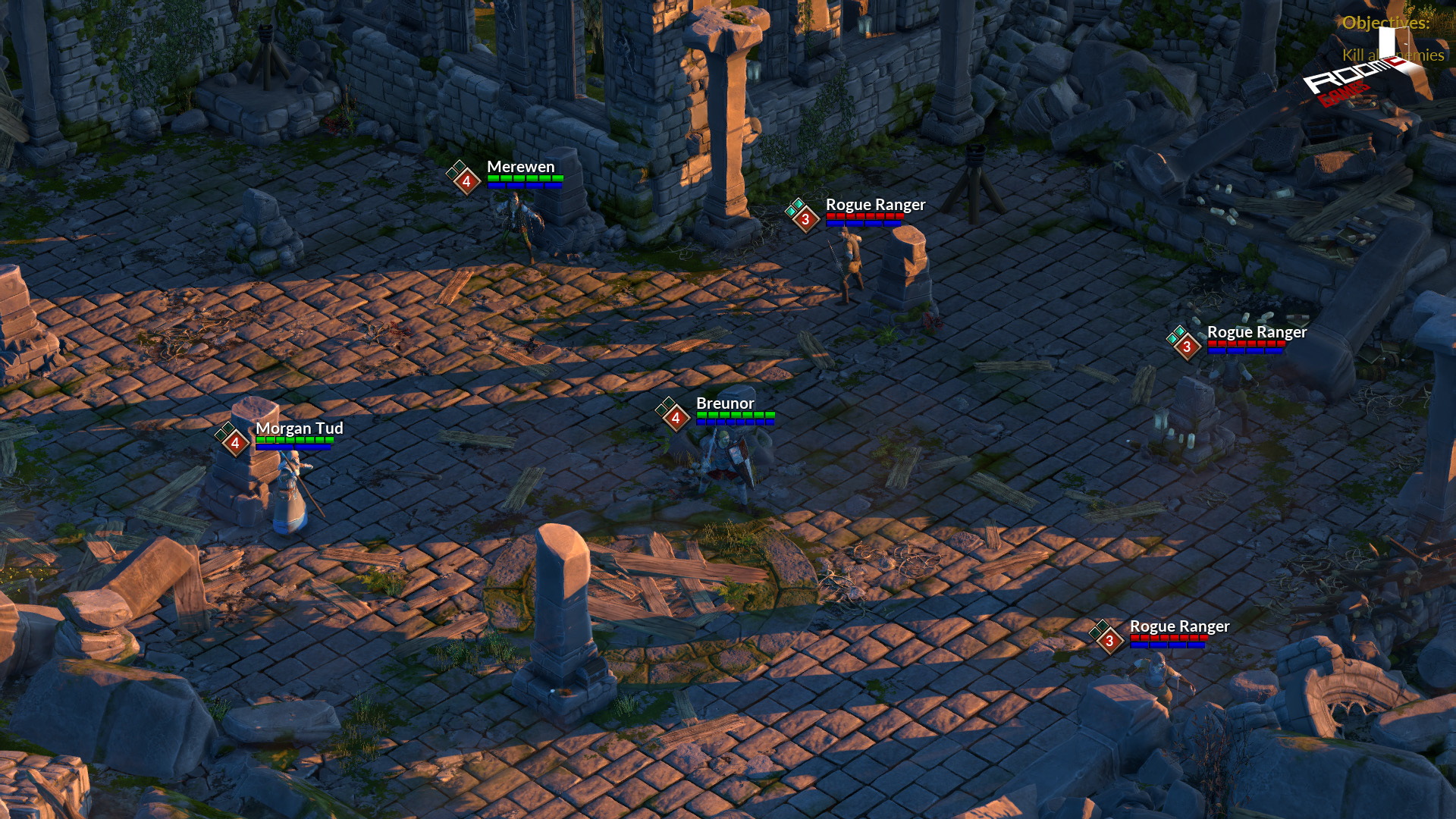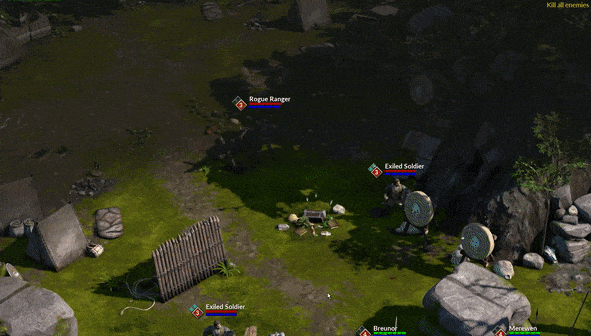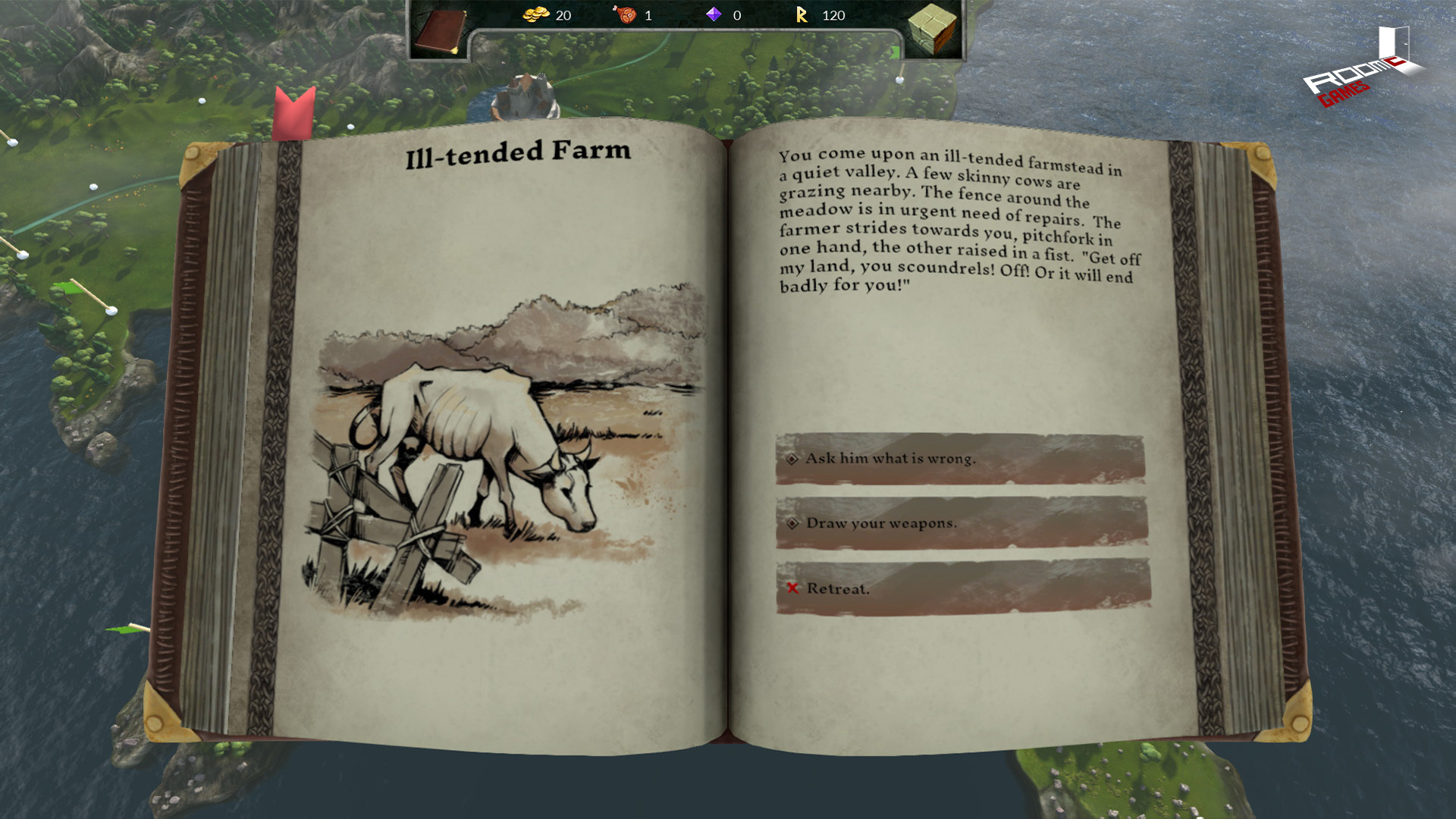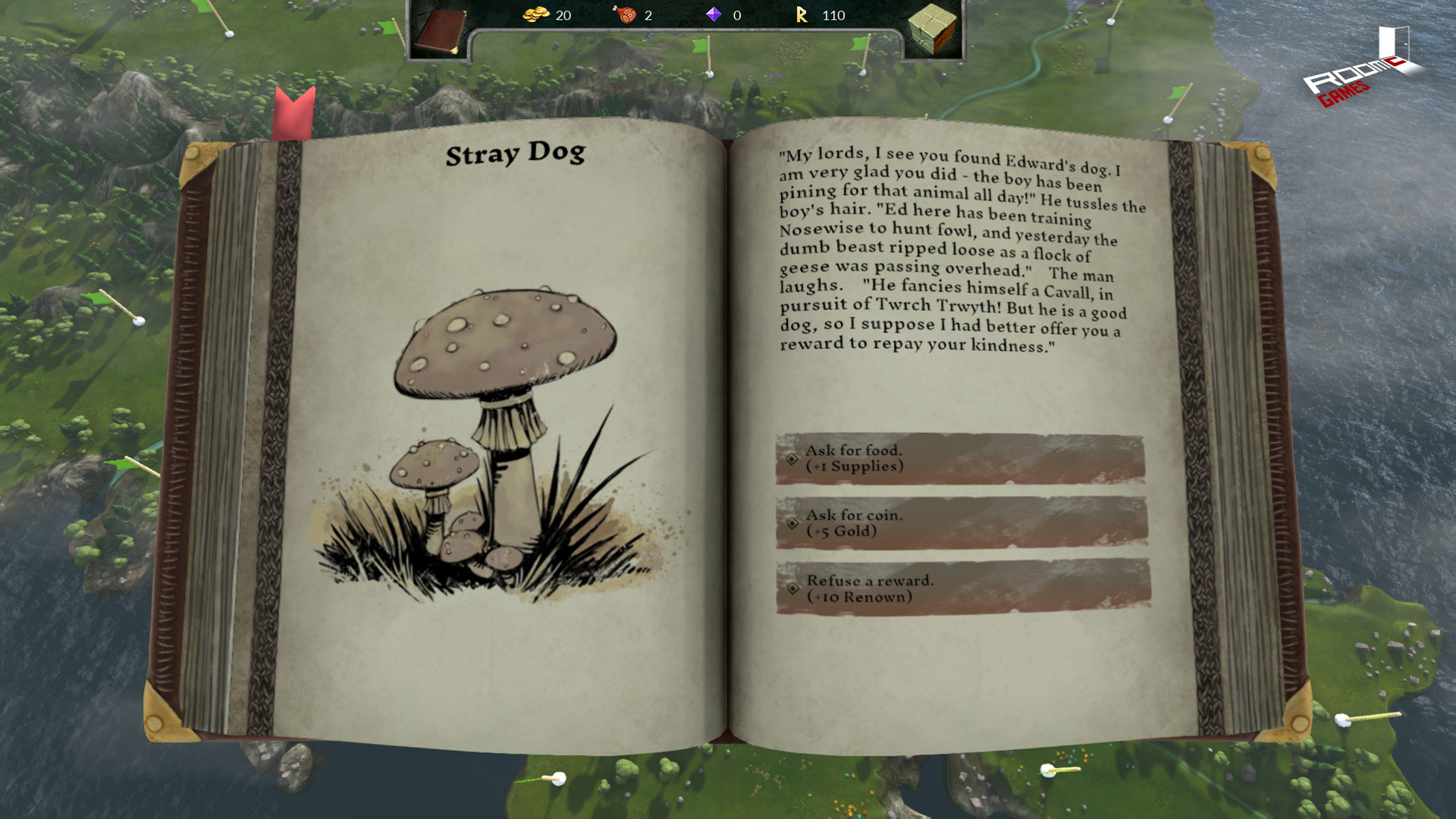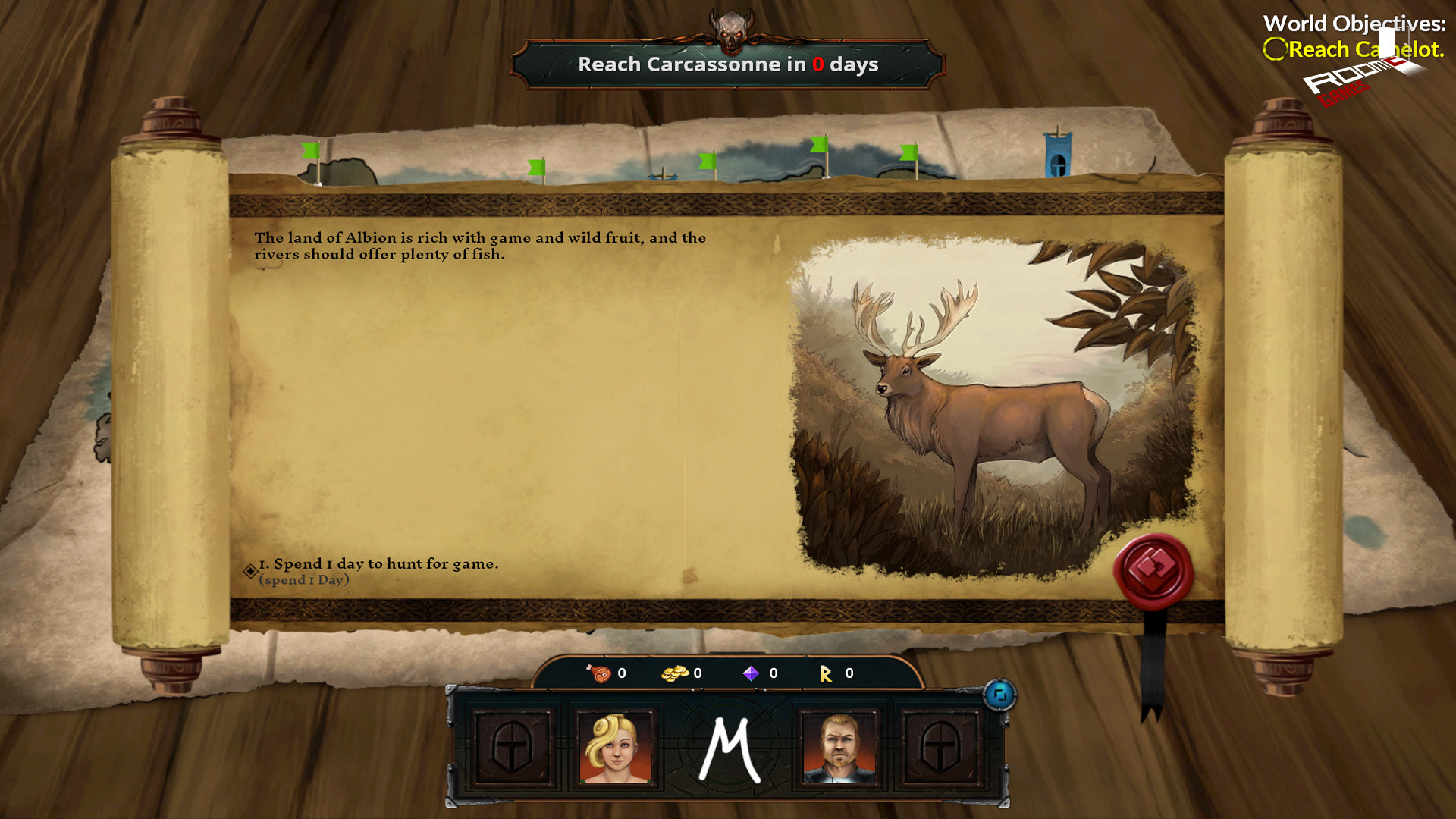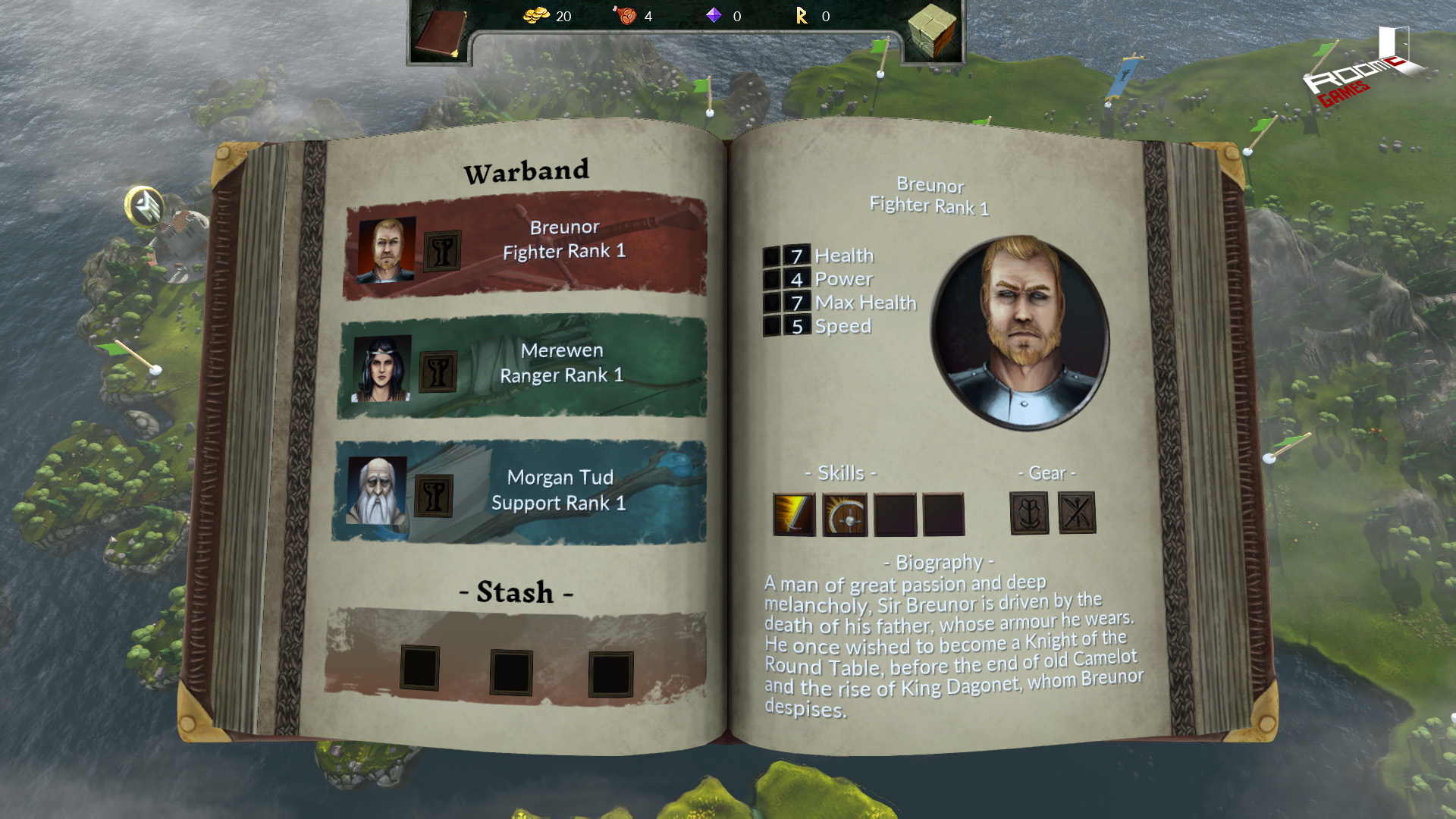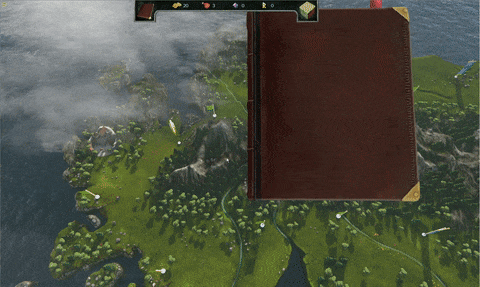
Apr 8, 2020
The Hand of Merlin - MarkoP
Hi folks!
Moving on to something different for this post, I want to talk about our base design idea for the overworld maps.
From the early days, we knew we wanted to have node traversal akin to FTL. The first issue was that our map is not space-based (and therefore allowed easy random node generation) but rather land-based. This meant generating random node positions could result in them being placed in logically inaccessible areas like seas, mountain peaks and similar. Our first maps were hand made and hand linked to create a general feeling of moving through the world. Encounters were hand placed at first, and later randomly assigned to each node.

For a long time, the movement on the overworld map was undirected, meaning you could go to any node, even if it was already visited. This would mean you’d get no rewards for going there, but based on how the map was linked, you could visit every node on the map before reaching the end. We didn’t really feel this was good because the players felt no sense of urgency, and the choice of taking one path or the other was lost. We needed a way to rush the player to the final node in the zone. The problem was we were directing the player to go towards the danger (as defined by the story), whereas in FTL the player was running away from danger. One of the first methods to solve this was adding a timer during which the player had to reach the end node. This was pretty much a failure because the players didn’t understand the timer at all (it was badly presented), and if it ran out, the game would straight-up end. This was really bad.
After that, we tried adding an enemy unit that moved across the world and destroyed nodes in order to force players to choose which special reward nodes to rush to. These enemy units would randomly spawn across the world every so often and move after every three moves the player made. Instead of the hard “game over” rule when the timer elapsed, we’d have the final enemy unit move to the player and initiate a very tough fight. Most of these attempts weren’t very well explained, and we kept coming up with better solutions to the core problem.
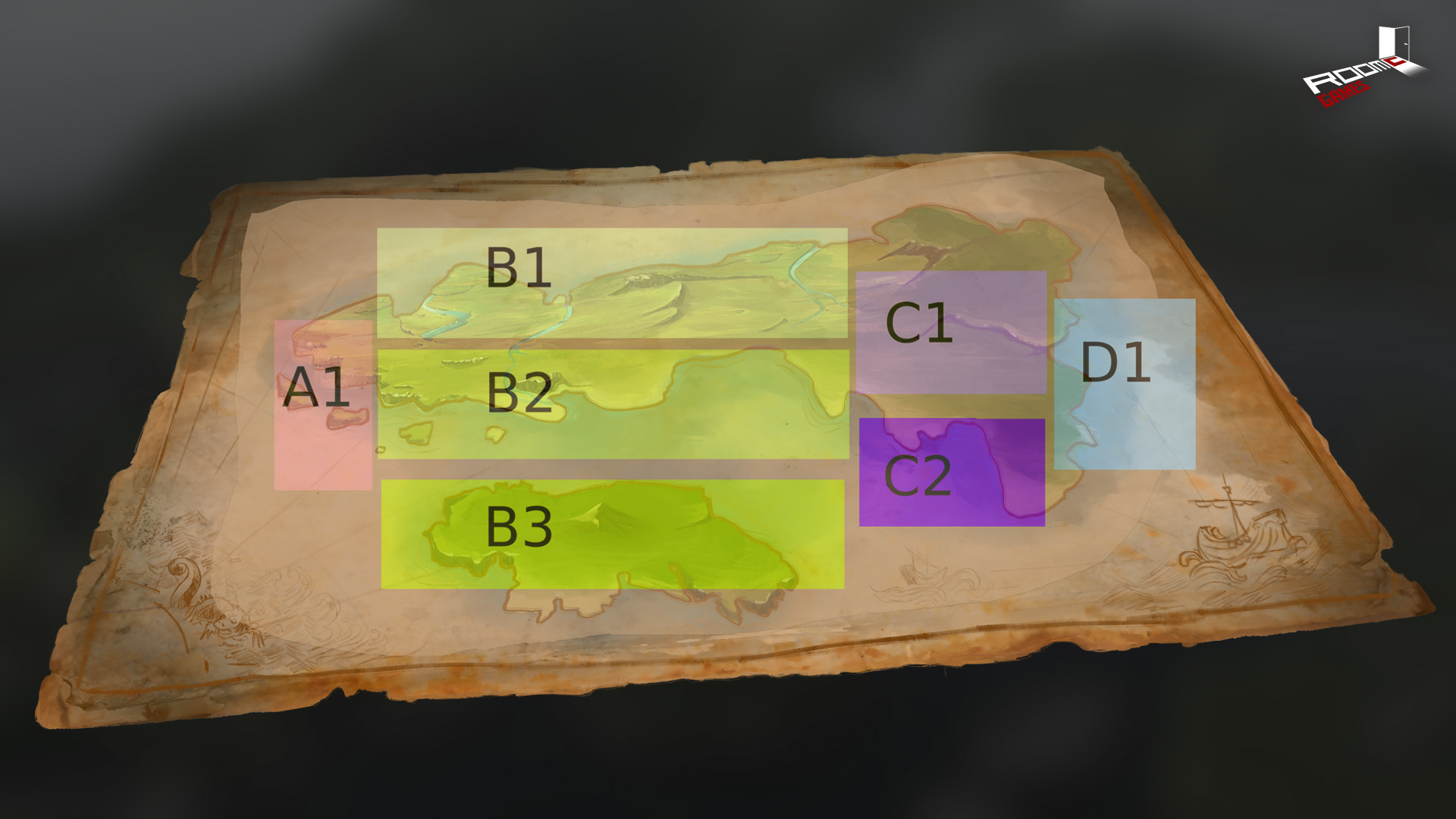
In the end, we decided that we’d just make the links between nodes be one way. This gets rid of the problems presented by the other solutions and solves the initial problem of having a sense of urgency and choice - moving to a location means you wouldn’t be able to reach a lot of the other locations. In some sense, it’s similar to the map traversal in Slay the Spire. The very last thing we added (fairly recently, last month) is random node layout generation. We created a tool that can author various node layout configurations. We then use some graph replacement methods to replace the few nodes we place on the world with a more dense network of nodes. How well this will work still has to be seen, as it’s a fairly new tool in our toolbox.
Thanks for reading! Come back next week for the start of the zone 2 showcase. Spoiler alert: its got snow! If you want to chat with us, come join the Discord server for the Hand of Merlin, or follow me on Twitter.
MarkoP
Moving on to something different for this post, I want to talk about our base design idea for the overworld maps.
From the early days, we knew we wanted to have node traversal akin to FTL. The first issue was that our map is not space-based (and therefore allowed easy random node generation) but rather land-based. This meant generating random node positions could result in them being placed in logically inaccessible areas like seas, mountain peaks and similar. Our first maps were hand made and hand linked to create a general feeling of moving through the world. Encounters were hand placed at first, and later randomly assigned to each node.

For a long time, the movement on the overworld map was undirected, meaning you could go to any node, even if it was already visited. This would mean you’d get no rewards for going there, but based on how the map was linked, you could visit every node on the map before reaching the end. We didn’t really feel this was good because the players felt no sense of urgency, and the choice of taking one path or the other was lost. We needed a way to rush the player to the final node in the zone. The problem was we were directing the player to go towards the danger (as defined by the story), whereas in FTL the player was running away from danger. One of the first methods to solve this was adding a timer during which the player had to reach the end node. This was pretty much a failure because the players didn’t understand the timer at all (it was badly presented), and if it ran out, the game would straight-up end. This was really bad.
After that, we tried adding an enemy unit that moved across the world and destroyed nodes in order to force players to choose which special reward nodes to rush to. These enemy units would randomly spawn across the world every so often and move after every three moves the player made. Instead of the hard “game over” rule when the timer elapsed, we’d have the final enemy unit move to the player and initiate a very tough fight. Most of these attempts weren’t very well explained, and we kept coming up with better solutions to the core problem.

In the end, we decided that we’d just make the links between nodes be one way. This gets rid of the problems presented by the other solutions and solves the initial problem of having a sense of urgency and choice - moving to a location means you wouldn’t be able to reach a lot of the other locations. In some sense, it’s similar to the map traversal in Slay the Spire. The very last thing we added (fairly recently, last month) is random node layout generation. We created a tool that can author various node layout configurations. We then use some graph replacement methods to replace the few nodes we place on the world with a more dense network of nodes. How well this will work still has to be seen, as it’s a fairly new tool in our toolbox.
Thanks for reading! Come back next week for the start of the zone 2 showcase. Spoiler alert: its got snow! If you want to chat with us, come join the Discord server for the Hand of Merlin, or follow me on Twitter.
MarkoP




